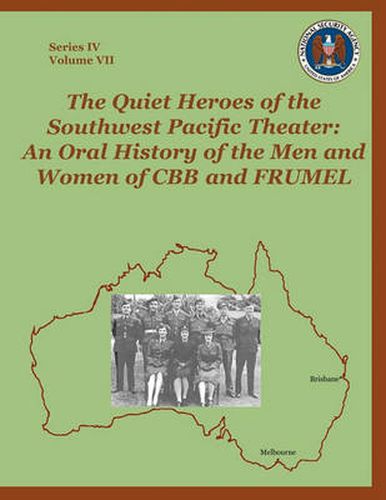Readings Newsletter
Become a Readings Member to make your shopping experience even easier.
Sign in or sign up for free!
You’re not far away from qualifying for FREE standard shipping within Australia
You’ve qualified for FREE standard shipping within Australia
The cart is loading…






This title is printed to order. This book may have been self-published. If so, we cannot guarantee the quality of the content. In the main most books will have gone through the editing process however some may not. We therefore suggest that you be aware of this before ordering this book. If in doubt check either the author or publisher’s details as we are unable to accept any returns unless they are faulty. Please contact us if you have any questions.
The Central Bureau Brisbane (CBB) and the Fleet Radio Unit Melbourne (FRUMEL) played vital, if largely unheralded, parts in supporting military operations in the Southwest Pacific in World War II. The communications intelligence (COMINT) they produced was often a major factor in decision making by General Douglas MacArthur, his staff, and other senior leaders in the struggle to prevent further Japanese conquests and to retake captured territory. The Quiet Heroes of the Southwest Pacific Theater: An Oral History of the Men and Women of CBB and FRUMEL fills many gaps in our knowledge of CBB and FRUMEL. It presents a unique portrait of the COMINT production process in wartime. COMINT production in World War II was an extremely complex endeavor. One major theme is how diverse aspects of the process combined to produce the intelligence distributed to commanders. Of particular interest is the subtle and supportive interplay between cryptanalysis and traffic analysis. Other factors, such as rudimentary machine processing and lucky discoveries on the battlefield, also contributed to the process. As a complex and cooperative process, however, the production of COMINT depended on a strong organizational structure which could meld components and make them work - and work quickly enough to product COMINT in time for operational use. It is not a contradiction to say that this organization also needed a structure which would get the best out of its brilliant staff. CBB and FRUMEL were successful in both counts.
$9.00 standard shipping within Australia
FREE standard shipping within Australia for orders over $100.00
Express & International shipping calculated at checkout
This title is printed to order. This book may have been self-published. If so, we cannot guarantee the quality of the content. In the main most books will have gone through the editing process however some may not. We therefore suggest that you be aware of this before ordering this book. If in doubt check either the author or publisher’s details as we are unable to accept any returns unless they are faulty. Please contact us if you have any questions.
The Central Bureau Brisbane (CBB) and the Fleet Radio Unit Melbourne (FRUMEL) played vital, if largely unheralded, parts in supporting military operations in the Southwest Pacific in World War II. The communications intelligence (COMINT) they produced was often a major factor in decision making by General Douglas MacArthur, his staff, and other senior leaders in the struggle to prevent further Japanese conquests and to retake captured territory. The Quiet Heroes of the Southwest Pacific Theater: An Oral History of the Men and Women of CBB and FRUMEL fills many gaps in our knowledge of CBB and FRUMEL. It presents a unique portrait of the COMINT production process in wartime. COMINT production in World War II was an extremely complex endeavor. One major theme is how diverse aspects of the process combined to produce the intelligence distributed to commanders. Of particular interest is the subtle and supportive interplay between cryptanalysis and traffic analysis. Other factors, such as rudimentary machine processing and lucky discoveries on the battlefield, also contributed to the process. As a complex and cooperative process, however, the production of COMINT depended on a strong organizational structure which could meld components and make them work - and work quickly enough to product COMINT in time for operational use. It is not a contradiction to say that this organization also needed a structure which would get the best out of its brilliant staff. CBB and FRUMEL were successful in both counts.